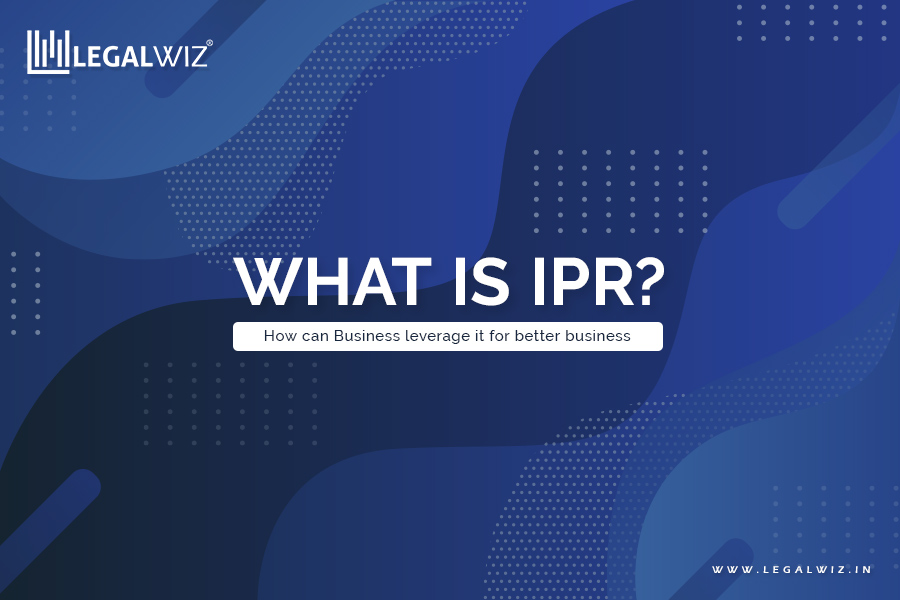
What is IPR – And how can Business leverage it for better business
Introduction
Intellectual properties contain all sorts of creations which in its box such as literature, technology, works of art, signs, pictures so on and so forth. One should focus on its IPR policy before initiating a new business.
The individuals working towards building their empire shall begin with online company registration which is a very straightforward and simple process, all you need is required documents and legal compliance. That contributes the artistic freedom while being beneficial to the ones who own it.
According to intellectual properties, regardless of whether you produce goods or services, write a novel or invent a new drug, you can safeguard it via IPR. This restraints others from using it without your prior approval.
There are mainly three types of IPRs as given below;
- Copyrights and related rights.
- Industrial property.
Table of Contents
ToggleCopyrights and related rights
– Authors are entitled to copyright to safeguard their work.
– It consists of reference works, files, architecture, computer programming, scientific drawing, books so on and so forth.
– This makes sure that others will not be able to use it without your prior approval.
– Copyrights safeguard creators legally against the unauthorized imitation or use of original material.
– If the original work is to be safeguarded by copyright then It should be in a tangible form.
– Copyright registration is not compulsory. However, registration is encouraged because it provides many benefits.
– Copyright registration in India demands legal documents, first-hand evidence of authorship to make required details of prevalent copyright available, etc.
– Copyright safeguards the author or creator’s work for a lifetime and even for more than 60 years, posthumously. It is publicly available and can be utilized without limitations.
Industrial property
Patents, trademarks, geographical indications, and industrial designs are included in industrial property rights.
Elaboration of trademark, patent, geographical indication, and industrial designs.
Trademark
Trademark is a distinguished patent or service identification sign.
– Another trademark is that can be graphically explained and can make a distinction betwixt products or services of one individual and of others, with the inclusion of the type of treatment, substance, and colour mix.
– Single word or set of numbers and letters, can be used to register a trademark.
– 3-D signs, mark, and even symbols can be drawn. For example, Google is a well-known trademark.
– A mark can be filed at national or regional rates, depending on the safeguard requirements.
– A brand, device, label, title, name, card, word, signature, shape of the goods, numbers, color packaging, or a combination of any can be included.
– It safeguards and assists in creating a brand that is crucial to the company’s growth.
– Brand’s distinct identity can be recognized by consumers. One can take an example of the fashion market to prove this. It opens up new marketing acts and modes as a means of maximizing profits. Hence, the sole aim of the company is to guarantee the authenticity and exclusivity of the brand. And trademark protection exactly offers it.
– The registration of the marks allows labelled proprietors to sell their goods and services cheaper or distinct from unsuccessful competitors, such as using a similar name/logo (here, online logo registration can be done via visiting the governmental portal. One has to fill the form with an attachment of documents and once it gets approved by an official with its authenticity, you can use the logo from further onwards in your business operations), or cloning fake. It promotes fair competition and helps customers to have multiple options when they purchase goods or services from one brand or company.
Patent
The inventor’s prerogative to introduce a new method or process should be a patent. You are the only person to manufacture, distribute, sell, or use a patent on a commercial basis in the market.
– Invention has to be modern, useful, and indistinguishable.
– It is not feasible to have an idea or model. The patentee will have an exclusive right for 20 years from the date of filing.
– Registry is compulsory and non-registered, and there is not the imposition of IPR until and unless there is prior art to safeguard it by transfer.
– The producer or maker is the proprietor, the proprietor is not the individual or organization of which the entity is working.
– Driving inventions for vehicles is a proprietary example of new technology.
Geographical indication
It signifies that a commodity belongs to a certain specified area and the price or popularity of that area.
– Geo-protected products and services such as Tuscan olive oil.
Industrial designs.
– Building quality makes products sui generis and attractive.
– Elements could be 3-D (targets or shapes) or 2-D (lines or patterns). For example, design on the glass of Coca-Cola bottle.
What does one need to know about IPR?
World intellectual property organization (WIPO) regulates the IPR. WIPO integrates the national and cross-border IPR security policies. That’s why protecting your business and its products and services are crucial. If you do not take the right action at the right time when it comes to IPR then you would miss the bus and eventually that would be detrimental for your business.


